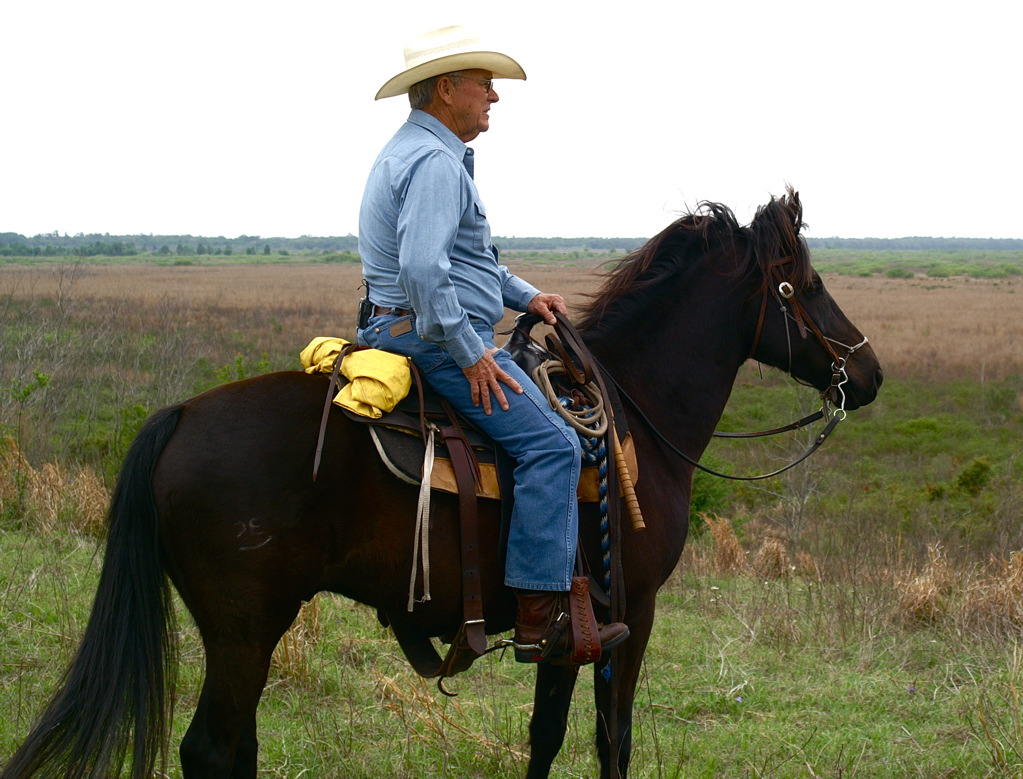Crack! An undeniably commanding sound when heard from a ten to twelve foot long whip being snapped in the air by a Florida Cracker. Hence the notorious sound lent itself as the identifier for the Florida Cracker Cowboy, his Cracker horse and the Cracker cattle he herded.
Juan Ponce De León is attributed as bringing the first horses and cattle to the United States on Florida’s Atlantic Coast during 1521. What transpired is some of the most harrowing and challenging events of conquest in the New World. These horses were derived from the majestic Spanish Horse, with roots in Arabian and Barb breeds, the most notable of its breed being from Andalusia.
[emember_protected custom_msg=”Click here and register now to read the rest of the article!”]
“Oral history tells us that the livestock remained and led to the first herds of horses and cattle running wild within the boundaries of La Florida.” (Cracker Cattle and Horses: A 500-Year History by Doyle Conner; Florida Cowboys, Carlton Ward, Jr.)
Many challenges for the New World’s Spanish Horses included surviving their exportation, the desolation of wars and starvation. Eventually some of these majestic beauties were resorted to a source of food for the starving soldiers and colonists. During the many expeditions of the Spanish Conquistadores, such as De Soto, it is possible that American Indians acquired horses, either by trade or abandonment, eventually beginning the Seminole and Chickasaw horses. The St. Augustine settlement also traded Spanish Horses with the Seminoles. Over an entire century would pass before a horse presence developed in the South East United States.
It is because they were “acclimated by the severe terrain of Mother Spain and relocation in Cuba and Puerto Rico, these animals had the ability to survive and eventually (after many generations) thrive in the hot, wet, parasite-infested grazing lands of Florida, which heretofore had been grazed only by deer and buffalo.” (Cracker Cattle and Horses: A 500-Year History by Doyle Conner; Florida Cowboys, Carlton Ward, Jr.) These trustworthy and intelligent equine became an integral part of Florida’s wildlife and first ranchos. Their light build and agility made them prime for use in herding cattle.
Regardless of time or their wild nature they maintained the stately look of their Spanish ancestors, and a reputation of courageousness characteristic to them. They were noted and highly valued for their strength of durability in rough conditions. That unique courage would prove invaluable during a pioneering time and the Civil War. In the following years they carried a significant role as cow ponies during the cattle-exporting boon to Cuba and would continue a legacy of historic proportions in Florida’s agricultural economy.
However, they would again face challenges and a narrow escape of extinction in the mid twentieth century. Repercussions from the Dustbowl and crossbreeding were slowly and inadvertently watering down the Cracker horse and their use as cow ponies. The Florida Cracker Horse Association and the Florida Department of Agriculture implemented the preservation and resurgence of the Cracker Horse. In 2008, lawmakers named the Florida Cracker Horse as Florida’s official heritage horse.
De Solleysel describes them in Le Parfait Maréchal as “extremely beautiful and the breediest of all, being portraits by a careful brush or fit for the mount of a king when he wishes to show the people his glory and majesty [. . .] it would be hard to find any horse more noble than they.” This is the Florida Cracker Horse’s noble lineage. Magnificent and graceful, worthy to be recognized and preserved – bred for beauty and conquest. The Cracker Horse: a breed founded in paradise that helped pioneer one of the United State’s first frontiers.
CREDITS
story by J.P. SMITH
Sources:
http://www.florida-agriculture.com/livestock/cracker_cattle.htm
http://www.floridacrackerhorses.com/history.htm
http://www.lrgaf.org/articles/spanish-horse-progeny.htm
[/emember_protected]

